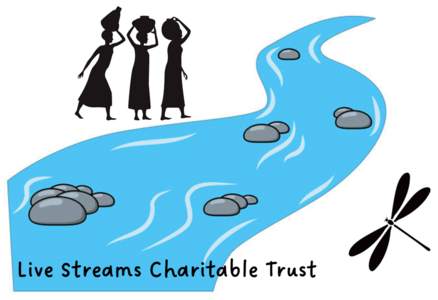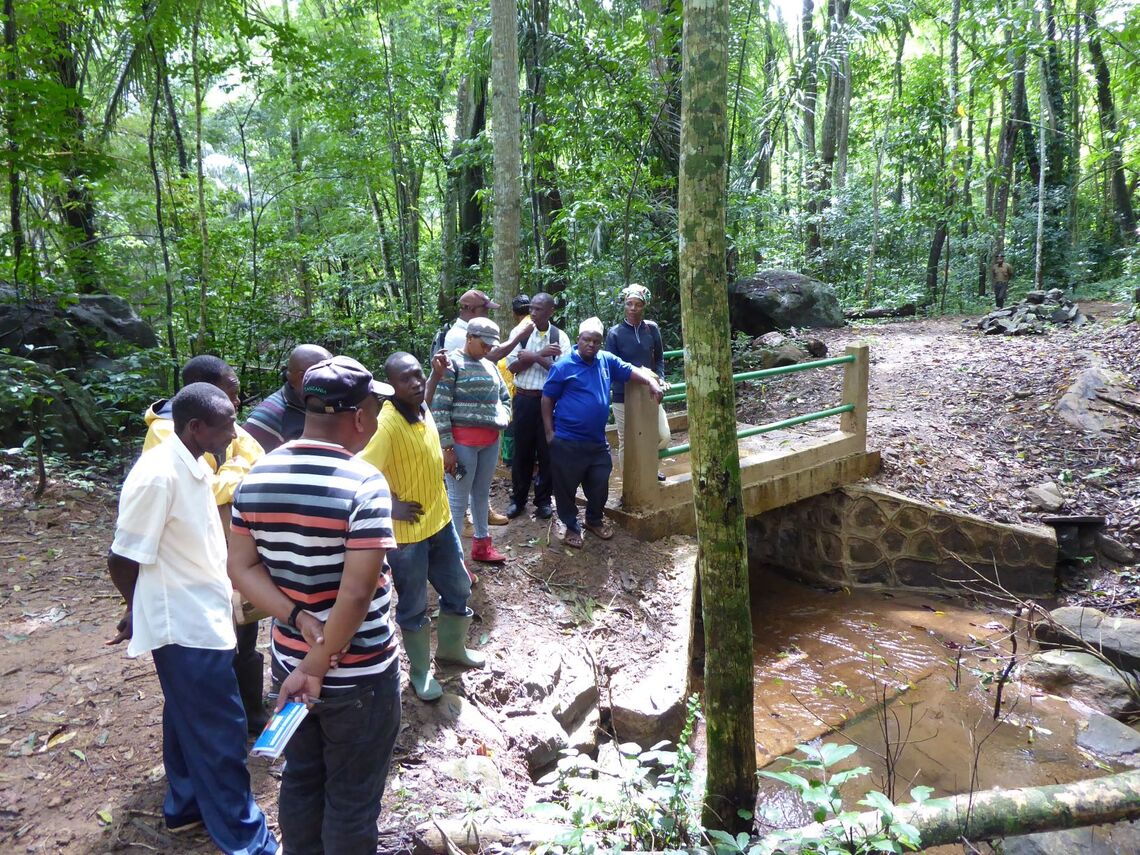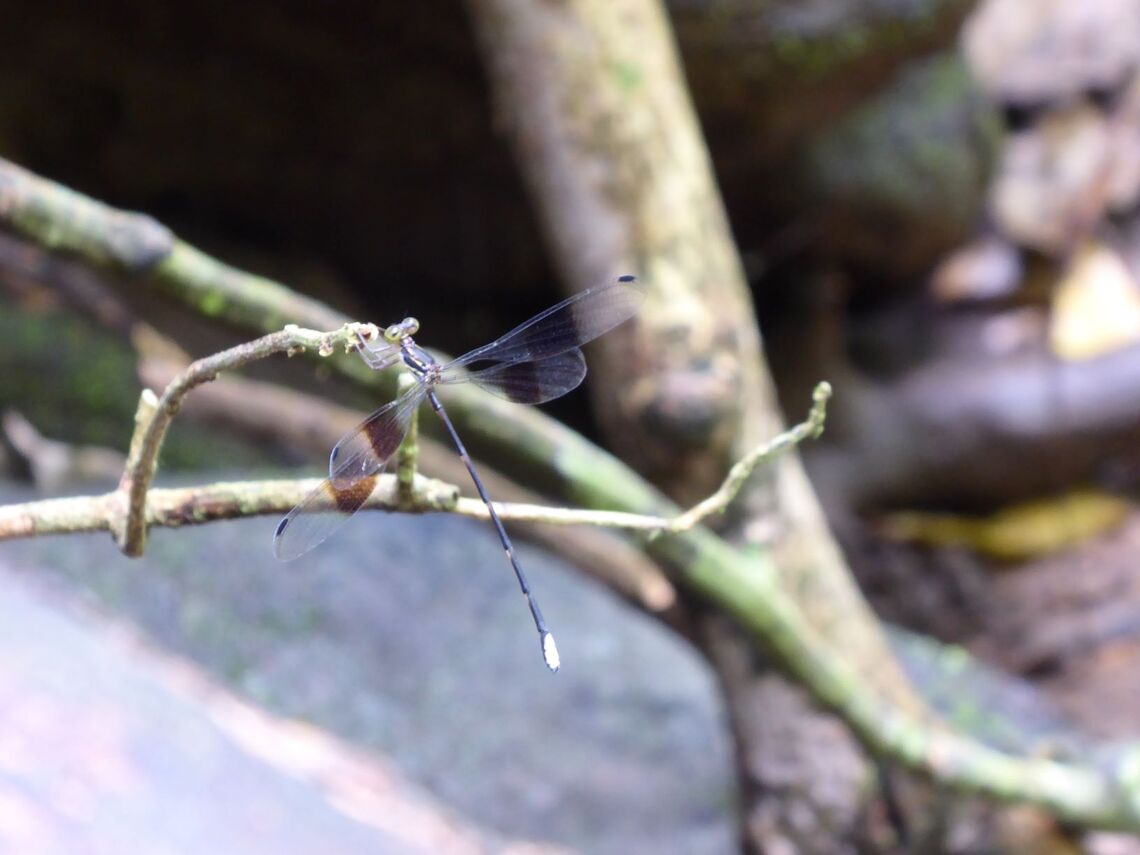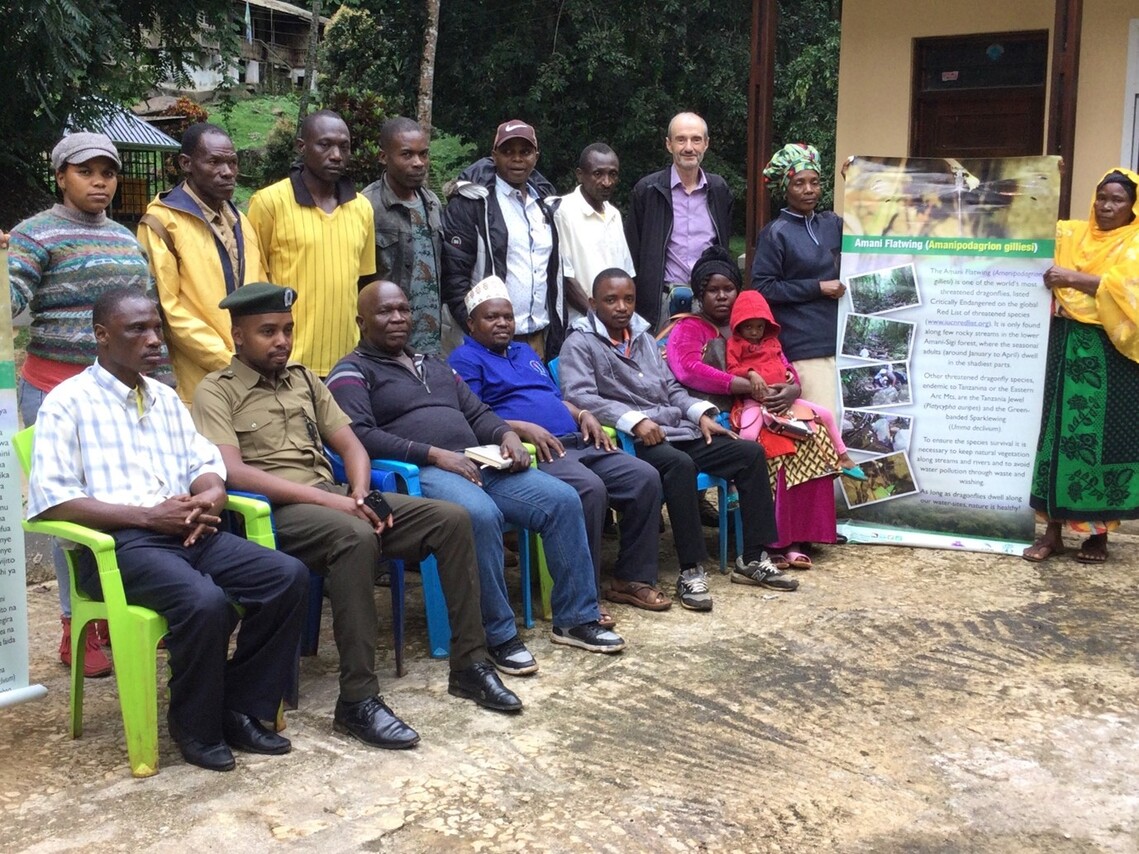Background
The Amani Forest Nature Reserve in the East Usambara mountains in northeast Tanzania has a large number of species of flora and fauna that are found nowhere else. One of the iconic endemic species of fauna is the Amani Flatwing damselfly (Amanipodagrion gilliesi) which may now be restricted to a single stream within the Reserve. The Amani Flatwing is listed as Critically Endangered on the IUCN Red List of Threatened Species and a single threatening event such as pollution or drought might cause this species to become extinct. Aside from its conservation importance, the Amani Flatwing and other endemic species such as the long-billed tailor bird (Artisornis moreaui) and populations of the African violet (Saintpaulia), attract tourists to the Reserve and they provide a source of income for local communities; for example, through guiding and the sale of local products such as spices. The Reserve is important for water catchment, soil conservation and other critical ecosystem services and so measures taken to protect the habitat of the Amani Flatwing will bring wider benefits to local communities.
Aims
The project had three objectives -
- To raise awareness among communities, local government authorities and the Forestry Service about the importance of conserving the Amani Flatwing and other species which share its habitat.
- To make a preliminary assessment of where the Amani Flatwing is present in and around the Reserve.
- To support local stakeholders to prepare a comprehensive plan for conserving the Amani Flatwing.
What was done
Community engagement
A stakeholder workshop was held on 22 February 2023 at which local stakeholders were sensitized to the importance of conserving the Amani Flatwing damselfly. Representatives of villages located adjacent to the habitat of the Amani Flatwing, local government agencies and Amani Nature Reserve management participated. The workshop was facilitated by Victor Mkongewa of AFON and Bob Matunda of the Amani Forest Nature Reserve.
Participants visited the stream where the Flatwing was last observed. Litter was seen in and around the stream and this highlighted one of the main challenges to preserving the remaining population of the damselfly. The stream was dry following an unseasonal shortage of rainfall, another risk factor for the survival of the Flatwing, and so it was not possible to see any live individuals. However, participants gave positive feedback on the workshop and each stakeholder group identified ways in which they could support future conservation efforts.
Photo: Some of the participants at the stakeholder workshop viewing a bridge recently constructed over the stream where the Amani Flatwing was recorded
Ecological survey
Streams were monitored for the presence of damselflies and dragonflies once a week from mid-March to mid-June 2023. Following a period of almost no rainfall from late December 2022 to late February 2023 members of the survey team led by Mfaume Rajabu were relieved to observe two adults (a male and a female) on 10 March. However, a total of only three adults (all males) were observed in subsequent weekly sampling with the last sighting recorded on 24 April. All these individuals were recorded on the same stream where the Flatwing was previously seen. None were seen in a nearby stream or the river into which both streams flow. Encouragingly, several individuals of two other rare species were recorded during the survey. These are the Tanzania Jewel (Platycypha auripes) and the Green-banded Sparklewing, (Umma declivium).
Photo: A male Amanipodagrion gilliesi at the stream in Amani
Conservation planning
A second stakeholder meeting was held at the Amani Forest Nature Reserve on 4 July 2023 to discuss findings in the project and identify actions to conserve the habitat. The meeting was facilitated by Victor Mkongewa. Alphonse Nyululu, Conservator at Amani Forest Nature Reserve, joined participants from local communities and the Muheza District Council and confirmed his strong support for the initiative.
Participants proposed that a tap could be installed close to the stream where the Amani Flatwing was recorded, with a concrete basin for washing clothes. The dirty water would drain into an area away from the stream. They proposed that a signboard should be placed by the stream explaining the importance of conserving the water quality and encouraging people to use water from the tap. They also stated that more research into the biology of the Amani Flatwing damselfly is needed. This is because it is not known where the female damselflies lay their eggs or where the larvae live.
Participants expressed their commitment to make others in their communities aware of the importance of protecting the habitat. They undertook to support AFON in looking for funds to install the tap and carry out other conservation measures.
Photo: Participants in the second stakeholder meeting at which an action plan was prepared
Outcomes
The project confirmed that a small population of the critically endangered Amani Flatwing damselfly still exists but that its survival is extremely precarious. Residents from two villages close to the stream where the damselfly was recorded were sensitized to the importance of conserving its habitat. With support from local authorities they developed an action plan to protect the area. The plan includes an undertaking to seek funding to construct alternative washing and drinking facilities; and to carry out further ecological research which will help to guide future conservation measures.
Victor Mkongewa, chairperson of Amani Friends of Nature, describes how the project has benefitted both the habitat and local people (click for video on Facebook)
Acknowledgement
Permits enabling the survey work to be carried out were granted by the Tanzania Wildlife Research Institute (TAWIRI) and Tanzania Commission for Science and Technology (COSTECH).



